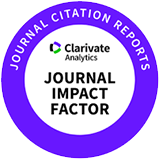Article
Mechanism of holocarboxylase synthetase and biotin supplementation in promoting adipose development
lei qin1, xing dai1, Guang Zhang1, Yan Luo1, Fan Deng1, Han Chu1, Liang Hong1, Bin Zhang1, Hua Yang1, Xiao Xu3,*, Ping Zhao4,**, Lei Pu1,2,***
Author Information & Copyright ▼
1Tianjin Key Laboratory of Agricultural Animal Breeding and Healthy Husbandry, College of Animal Science and Veterinary Medicine, Tianjin Agricultural University, Tianjin 300384, China.
2Tianjin modern Tianjiao Agricultural Technology Co., LTD,Tianjin Key Laboratory of Green Ecological Feed, Tianjin 300384, China.
3Anhui Province Key Laboratory of Embryo Development and Reproductive Regulation, Anhui Province Key Laboratory of Environmental Hormone and Reproduction, School of Biological and Food Engineering, Fuy, Fuyang 236037, China.
4Institute of Animal Science, Chinese Academy of Agricultural Sciences, Beijing 100193, China.
*Corresponding Author: Xiao Gao Xu, Anhui Province Key Laboratory of Embryo Development and Reproductive Regulation, Anhui Province Key Laboratory of Environmental Hormone and Reproduction, School of Biological and Food Engineering, Fuy, Fuyang 236037, China. E-mail:
xgx138@126.com.
**Corresponding Author: Ping Fu Zhao, Institute of Animal Science, Chinese Academy of Agricultural Sciences, Beijing 100193, China. E-mail:
zhaofuping@caas.cn.
***Corresponding Author: Lei Pu, Tianjin Key Laboratory of Agricultural Animal Breeding and Healthy Husbandry, College of Animal Science and Veterinary Medicine, Tianjin Agricultural University, Tianjin 300384, China. Tianjin modern Tianjiao Agricultural Technology Co., LTD,Tianjin Key Laboratory of Green Ecological Feed, Tianjin 300384, China. E-mail:
pulei87@126.com.
© Copyright 2025 Korean Society of Animal Science and Technology. This is an Open-Access article distributed under the terms of the
Creative Commons Attribution Non-Commercial License (http://creativecommons.org/licenses/by-nc/4.0/) which permits
unrestricted non-commercial use, distribution, and reproduction in any
medium, provided the original work is properly cited.
Abstract
Pig back fat (BF) thickness is a key indicator for evaluating lipid deposition in pigs. Consuming pork belly with thick BF can increase cholesterol intake and negatively impact human health. Holocarboxylase synthetase (HLCS) is a crucial ligase that binds biotin to carboxylases, affecting the function of biotin-dependent carboxylases. The relationship between single-nucleotide polymorphisms (SNPs) in <italic>HLCS</italic> and BF in pigs, along with the direct effects of <italic>HLCS</italic> on adipocyte development, remains unclear. While biotin is used to treat HLCS deficiency, its role in adipocyte development is not well understood. This study identified two <italic>HLCS</italic> SNPs associated with 100-kg BF in 592 Duroc pigs. In 3T3-L1 cells, <italic>HLCS</italic> interference reduced cell proliferation and decreased protein levels of phosphorylated p38 (p-p38) and phosphorylated signal-regulated kinase1/2 (p-ERK1/2) in the MAPK signaling pathway. Exogenous biotin promoted <italic>HLCS</italic> expression and alleviated the inhibitory effects of <italic>HLCS</italic> interference on lipogenesis-related genes, lipolysis-related genes, glycolysis-related genes, and p-ERK1/2 and p-p38 protein expression in adipocytes. In conclusion, <italic>HLCS</italic> is a significant candidate gene for pig BF development, with its interference adversely affecting adipocyte growth. Exogenous biotin not only stimulated HLCS expression but also influenced lipid metabolism by regulating carboxylase activity, glycolysis, and lipid synthesis/degradation through the MAPK pathway. This study provides new insights into HLCS function and the therapeutic role of biotin in HLCS deficiency, offering a theoretical foundation for molecular breeding of pigs with reduced BF.
Keywords: HLCS gene; biotin; single-nucleotide polymorphism; adipose development; MAPK signaling pathway
















